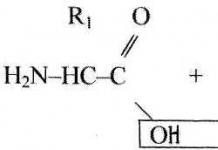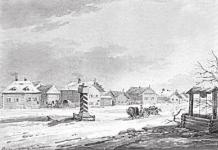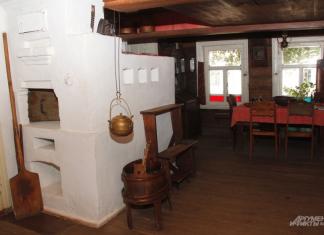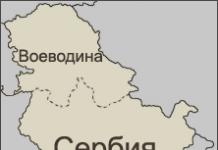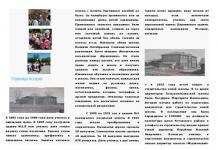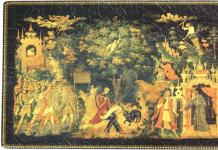Armenia is a landlocked country in the Transcaucasus. It is located in the north-west of the Armenian Highlands, also called historical Armenia, between the Black and Caspian Seas, from the north and east it is framed by the ridges of the Lesser Caucasus. It borders with Georgia, Azerbaijan, the Nagorno-Karabakh Republic, Iran and Turkey.
This article refers to modern Armenia, however, it is worth noting that Armenia often refers to the territories of the Armenian Highlands and Cilicia, which have been inhabited by Armenians since ancient times, but are currently part of Turkey. Armenians lived in these places for thousands of years until, as a result of the genocide policy launched by the Turkish authorities in 1915 Armenian population was destroyed or expelled from this earth. In addition to many historical monuments (the monastery on the island of Akhtamar, the ruins of Ani, the ancient capital of Armenia, etc.), Mount Ararat, one of the symbols of the Armenian people, also remained in Turkey.
Armenia is located in the Transcaucasus to the south of Russia between the Black and Caspian Seas, occupies most of the interfluve of the Kura and Araks. The greatest length from northwest to southeast is 360 km, and from west to east - 200 km. The distance in a straight line to the Caspian Sea is 75 km, to the Black Sea - 145 km, from the Persian Gulf - 960 km.
Armenia borders in the north with Georgia, in the east with Azerbaijan and the Nagorno-Karabakh Republic, in the south with Iran, in the southwest with Nakhichevan Autonomous Republic(as part of Azerbaijan), in the west - with Turkey. The total length of the borders is 1254 km.
Relief
Armenia is the highest mountainous country in the Transcaucasus. Over 90% of its territory, which is approximately 29,800 km2, is located at an altitude of more than 1000 m, about half - at an altitude of more than 2000 meters, and only 3% of the territories lie below 650 m. The lowest points of the relief are in the valleys of the Araks rivers ( in the south of the country) and Debed (in the northeast), their height above sea level is 380 and 430 m, respectively. The highest point, Mount Aragats, rises to 4095 m above sea level.
Armenia is located in the northeast of the Armenian Highlands. The mountain ranges of the Lesser Caucasus bordering the country cover the north of Armenia, stretch to the southeast, between Lake Sevan and the border with Azerbaijan, then south, approximately along the Armenian-Azerbaijani border, up to Iran. Here the relief is made up of medium-altitude mountain ranges, separated by deep valleys, many of which are deep gorges. Thus, the mountains make communication between the north and south of the country very difficult. To the southwest of the mountain ranges of the Caucasus begins the East Armenian volcanic highlands, which occupies about a third of the country's territory. It extends from the Javakheti highlands in the northwest to the Karabakh highlands in the southeast. Here, the dissection and slopes of the relief are relatively small, the main forms of relief are lava plateaus, erosion valleys, volcanic ridges (Gegham, Vardenis) and massifs. The largest of the latter - Aragats, is the highest point in Armenia.
To the south of the volcanic massif is the northern part of the Middle Araks intermountain depression - the Ararat basin, stretching east from the mouth of the Akhuryan River along the Araks River. The left-bank part of the basin is located on the territory of Armenia. It starts from the southern extremities of the volcanic plateaus at an altitude of 1000-1400 m, descends with a slight slope to the Araks, forming a wide Ararat plain at an altitude of 800-900 m.
South of the country - region fold-block mountains and deep river valleys. characteristic features The relief of this area is the high altitude of the ridges (the Zangezur Range is the highest in the Lesser Caucasus), deep and dense dissection of the relief, pronounced altitudinal zonation and sparse vegetation.
Minerals
565 deposits of 60 types of minerals are known on the territory of Armenia: there are deposits of all types of used metals - ferrous (Fe, Mn, Cr), rare (Ti, Ni, W, Mo, Re), scattered (Bi, Hg), non-ferrous (Cu , Pb, Al, Zn, Mg), precious (Au, Ag, Pt), as well as non-metallic minerals.
On the territory of Armenia there are three metallogenic belts characterized by various minerals: Alaverdi-Kafan, Pambak-Zangezur and Sevan-Amasi. In the south of the country there are large copper-molybdenum deposits - near Kajaran, Dastakert and Agarak. In terms of molybdenum reserves, Armenia occupies one of the first places in the world. Also in Armenia there are significant deposits of gold and coal containing precious metals.
Among non-metallic minerals, natural stones are the most significant: tuffs, basalts, pumice, marble, onyx, etc.
Climate
The temperature in Armenia depends mainly on the height above sea level. The mountains block the climatic influence of the Mediterranean and Black Seas, creating wide seasonal temperature fluctuations. In the Armenian Highlands, the average winter temperature is about 0 C and the average summer temperature exceeds 25 C. The average precipitation is from 250 millimeters per year in the lowest places above sea level in Armenia, that is, in the valley of the Araks River, to 800 millimeters per year on the highest points of Armenia. Despite harsh winters, the abundance of volcanic soil made Armenia one of the earliest places for agricultural activity.
Water resources
The territory of Armenia belongs to the Kura and Arax basins. Araks - largest river countries, to the basin of which 76% of its area belongs - forms the state border with Iran and most of the border with Turkey. Its largest tributaries are the border Akhuryan, flowing from Sevan Hrazdan, as well as the rivers Sevdzhur with Kasakh, Azat, Arpa, Vorotan, Voghji. The northeastern part of the country mainly belongs to the basins of the tributaries of the Kura, the largest of which are the Debed and Aghstev rivers. Crossing the mountain ranges, the valleys of these two rivers form the main routes connecting the center of the country with the north.
Of the total precipitation (15,000-18,000 million m3), 2/3 evaporates, and only 1/3 forms ground or underground runoff. The runoff in different areas of the country is uneven: due to the porosity of volcanic rocks, underground runoff predominates in areas with volcanic relief, while surface runoff predominates in folded areas.
The state of Armenia is located on the Eurasian continent. It is located in the southern part of the geopolitical region. Which territory of Armenia by state is almost 30,000 square meters. km. The population is about 3.3 million people. Armenia declared independence in 1991. It borders on 4 states: in the west - with Turkey, in the north - with Georgia, in the south - with Iran and in the east - with Azerbaijan. The state has no maritime borders. The capital is the city of Yerevan. The form of government is a republic.
Between the inland Caspian Sea and the Black Sea, it is located in the north, reaching the ranges of the Lesser Caucasus. And its northeastern part is the territory of the republic. Armenia, however, like other states of the Caucasus, is a mountainous country. Naturally, such geographical position directly affects many factors. But what, you can find out by reading this article.
Terrain Features
Armenia, as mentioned above, is a mountainous country, located on the young. This is a region of mountains, the process of formation of which has not yet been completed. The most basic factor that indicates the continuation of mountain building is earthquakes. It has been historically established that during its existence, Armenia has been subjected to destructive action many times. Very often, the strength of the shocks reached 10 points out of the maximum 12.
Earthquakes are connected with the fact that the territory of Armenia is located on the territory where tectonic faults pass: Garni, Akhuryan and Pambak-Sevan. It is in them at a depth of 20-35 km that the centers of future shocks arise. The last largest happened in 1988. The shocks reached 10 points and covered the entire territory of the country, and the shuddering wave went around the entire Earth. As a result of this natural disaster, many cities were destroyed, about 25 thousand people died.
Relief
The territory of Armenia is occupied for the most part is considered a high-mountainous country. More than 90% of the entire territory of the state is located at an altitude of about 1,000 meters. The lowest sites are registered in the river valley on the south side (380 m above sea level). The highest peak in Armenia is the Aragats mountain range. It is located in the west of the country. This massif is a mountain range of 4 high peaks with a total length of 40 km. The highest peak reaches over 4 thousand meters.

Only 15% of the territory is occupied by plains. They have a small area and are represented mainly by intermountain basins and depressions. The largest plain of Armenia is the Ararat plain, with an area of 3,300 sq. km. It is located in the western region of the country. Despite the small area, the plains are of great importance for the life of the country. It was thanks to these sites that the opportunity to develop agriculture appeared.
Climatic features
The territory of Armenia is completely located in the subtropical climate zone. But weather in the country differ significantly by region. It depends to a greater extent on the heights at which a certain area is located. There are 6 climatic zones in the country. They are distributed in the direction of altitudinal zonality. The flat terrain is dominated by a subtropical climate with hot summers and warm winters with little snow. The higher the area rises, the hotter it gets:
- in the low mountains - a dry climate with moderate winters and warm comfortable summers;
- in the middle mountains - moderate with warm summers and cold winters;
- in the highlands, the climate is temperate cold with frosty winters and cold summers.

The amount of precipitation also increases with height: from 350 mm in the plains to 900 mm in the highlands. Great importance winds affect temperature. In winter, they come from the northern and western directions; in summer, southern and southeastern directions predominate.
Minerals
Armenia is a country with rich deposits of minerals. In total, about 60 species have been explored and mined. Of the metallic minerals, there are deposits of aluminum, molybdenum ores, as well as deposits of gold and platinum. The mountainous territory of Armenia is rich in rocks. These are marble, pumice, tuff, dolomite, perlite, limestone rocks.
Inland waters
About 700 sources of underground mineral waters have been explored on the territory of the country, which have a healing effect. All residents of the former Soviet Union. It is not for nothing that many people used to strive to come to Armenia in order to improve their health.

This country is rich in water resources. About 9.5 thousand rivers flow through its territory, there are over 100 lakes. The largest rivers of Armenia are Akhuryan, Debed, Hrazdan, Arpa. The largest lake is Sevan.
Nagorno-Karabakh
For a long time, an ethno-political conflict has been going on between the two states (Armenia and Azerbaijan). However, in the late 1980s, it escalated with new force. In 1991, large-scale hostilities began that affected the inhabitants of both states. They lasted four years. In May 1994, a ceasefire document was signed, but to this day Nagorno-Karabakh is a disputed territory between Armenia and Azerbaijan.
Republic of Armenia
Armenia- a state in the Transcaucasian region of Western Asia. In the north it borders with Georgia, in the east and southwest - with Azerbaijan, in the west - with Turkey, in the south - with Iran.
The name comes, according to legend, from the name of Armenak - the ancestor of the Armenians.
Capital
Square
Population
3336 thousand people
Administrative division
The country is divided into 11 regions (mazrov).
Form of government
Parliamentary republic.
head of state
President elected for a term of 5 years.
supreme legislative body
National Assembly (Parliament) with a term of office of 5 years.
Supreme executive body
Government of the Republic of Armenia.
Big cities
Kumayri, Gyumri.
Official language
Armenian.
Religion
94% - Armenian Apostolic (Orthodox) Church, 4% - Russian Orthodox Church.
Ethnic composition
93% - Armenians, 1% - Azerbaijanis, 2% - Russians, 4% - Kurds, Ukrainians, Georgians, Greeks.
Currency
Dram = 100 lumam.
Climate
Continental dry. The average annual temperature is + 11 °C. Precipitation falls up to 400 mm per year on the plains and up to 500 mm in the mountains. There are also glaciers.
Flora
Forests occupy 15% of the country's territory. Beech, oak, hornbeam, pine, spruce, cedar, fir grow here. Alpine meadows are located in the mountains.
Fauna
The fauna of Armenia is quite rich. Here you can meet wild boar, jungle cat, forest cat, lynx, bear, jackal, squirrel, ground squirrel, gyurza, viper, scorpion. Birds include eagle, gull, hoopoe, bearded vulture, finch, woodcock, robin, and woodpecker. Of the fish, the Sevan trout is especially famous.
Rivers and lakes
The main rivers are Araks and Hrazdan. There are over 100 lakes in Armenia, the largest and most famous of them is the alpine Lake Sevan, with about 700 mineral springs.
sights
The country can rightfully be considered an open-air museum. There are more than 4 thousand architectural monuments on its territory. Among them are the fortress and temple of Garni (III-X centuries), castles, palaces and churches in Dvin and Zvartnots, a complex of temples in Etchmiadzin, a large number of ancient temples and churches throughout the country. Yerevan hosts the world's largest repository of ancient manuscripts - Matenadaran, 15 different museums.
Useful information for tourists
In Armenia, the traditional norms of family and kindred mutual assistance, colorful family and calendar rituals are preserved. In July, the Vardavar holiday (Vard is the pagan god of water) is merrily celebrated: young people dance, pour water on each other, climb the flowering mountain meadows and springs. A characteristic feature of the modern way of life of the Armenian people is a deep and lively interest in their cultural and historical traditions, the desire to preserve the continuity of generations.
Geographical position
Armenia located in Transcaucasia, south of Russia between the Black and Caspian Seas, in the northeastern part of the ancient volcanic Armenian Highlands, surrounded by spurs of the Lesser Caucasus Range. In the north it borders with Georgia, in the east - with Azerbaijan, in the west and south - with Turkey, in the south - with Iran. Most of Armenia's borders fall on the states with which it had constant conflicts - Turkey and Iran.
Most of the territory of Armenia is located at altitudes from 1000 to 2500 m above sea level (the average height is 1800 m, the highest point is the city of Aragats, 4090 m), on the territory of lava plateaus and low mountain ranges of Pambak, Geghama, Vardenis and Zangezur ridges, dissected by a dense network of valleys and deep gorges. The south-west of the country is occupied by the relatively flat Ararat valley (average height 850-1000 m), in which most of the country's large settlements are concentrated.
The south-west of the country is occupied by the relatively flat Ararat valley (average height 850-1000 m), in which most of the country's large settlements are concentrated. The country has no access to the sea.
total area about 29.8 thousand sq. km. The total length of the borders is 1254 km
More than 90% of the republic's territory is located above 1000 m above sea level; the lowest points (about 400 above sea level) are located in the extreme north (gorge of the Debed river) and south (river Arak). In the north-east of the republic in the sublatitudinal and north-western - south-eastern directions, fold-block ridges of the central part of the Lesser Caucasus stretch: Sokhmetsky, Bazumsky, Pambaksky, between which deep tectonic valleys are located.
History
There have been more than enough tragedies in the history of Armenia. It was conquered by almost all powerful countries ancient world, and at the beginning of the twentieth century, it almost disappeared from the face of the earth. Soviet authority came to the country unexpectedly and, being an uninvited guest, undertook to erect heavy monumental buildings, leaving them - like the taste for grandiose military parades - as a memory to posterity. The conflict with neighboring Azerbaijan flared up in the early 1990s. and led to an economic blockade that prevents proper economic growth, mainly due to the fact that fuel and some goods have become scarce. But no difficulties prompted the Armenians to abandon the worship of their culture and did not prevent them from living at a measured pace.
How to get there
 By plane
By plane
by the most the best way get into the country, is, of course, to purchase air tickets to Armenia. Airlines such as Sibir, Armavia and Aeroflot operate several flights daily from Moscow, St. Petersburg, Kazan, Kyiv, Kharkov, Dnepropetrovsk and from many other cities and suburbs of the Russian Federation and the CIS.
When buying tours to Armenia, you need to remember that the borders of this country with Azerbaijan and Turkey are closed, you only need to get through Georgia, but this requires a visa. When traveling by car, it is worth remembering that the distance between Moscow and Yerevan is 2250 kilometers. Also, there are bus flights to Yerevan, but choosing this transport, you will need to make a transfer.
You can also get from Moscow to Armenia by train, but you must first change in Azerbaijan, and then in Georgia. The whole journey will take four days.
The Moscow-Tbilisi train runs several times a week, passing through Ayrum, Alaverdi, Vanadzor and Gyumri. The train runs around 12 noon.
A few years ago, a direct route from Russia to Armenia was opened, but at present it is closed due to the Georgian-Abkhaz confrontation.
Visa
 Entry to Armenia for citizens of Russia and the CIS - visa-free. You must have a passport with you, valid for at least 3 months from the date of completion of the planned trip. When traveling with children, you must take a birth certificate, the child must be entered in the parent's passport or have their own passport, if the child is traveling accompanied by one of the parents or third parties, a notarized power of attorney from the second parent or from the parents is required to export the child .
Entry to Armenia for citizens of Russia and the CIS - visa-free. You must have a passport with you, valid for at least 3 months from the date of completion of the planned trip. When traveling with children, you must take a birth certificate, the child must be entered in the parent's passport or have their own passport, if the child is traveling accompanied by one of the parents or third parties, a notarized power of attorney from the second parent or from the parents is required to export the child .
Climate
 Climate Armenia is continental, mountainous. In summer, the weather in Armenia is hot and dry, and winter, although short, is characterized by rather severe weather. In the foothills, the average temperatures in summer are from +24 to +26 °C, in winter - about +5 °C. In mountainous areas, the average temperature in summer is from +10 to +22 °C, in winter - from +2 to -14 °C, depending on the altitude of the place. Even within the same city, the temperature difference between two neighboring areas can reach 2-3 °C. In the autumn-spring period, severe frosts are frequent, while the temperature on the soil can drop to -28 ° C.
Climate Armenia is continental, mountainous. In summer, the weather in Armenia is hot and dry, and winter, although short, is characterized by rather severe weather. In the foothills, the average temperatures in summer are from +24 to +26 °C, in winter - about +5 °C. In mountainous areas, the average temperature in summer is from +10 to +22 °C, in winter - from +2 to -14 °C, depending on the altitude of the place. Even within the same city, the temperature difference between two neighboring areas can reach 2-3 °C. In the autumn-spring period, severe frosts are frequent, while the temperature on the soil can drop to -28 ° C.
Video
Population
 Population Republic of Armenia - 3.8 million. Approximately the same number lives in other countries of the world. National composition Armenia is the most homogeneous among all the former Soviet republics: 95.66% of its population are Armenians: Russians also live in the republic,
Population Republic of Armenia - 3.8 million. Approximately the same number lives in other countries of the world. National composition Armenia is the most homogeneous among all the former Soviet republics: 95.66% of its population are Armenians: Russians also live in the republic,
Ukrainians, Kurds, Greeks, Assyrians.
Outside the country, Armenians live in more than 60 countries of the world - the CIS countries, the USA, France, Greece, Germany, Italy, Sweden, Spain, Lebanon, Iran, Turkey and other countries.
The Armenians belong to the large Caucasoid racial group of peoples, the trunk of the southern Caucasoids; within the boundaries of the southern Caucasoid trunk - belong to the Balkan-Caucasian race. Within the Balkan-Caucasian race - to the Armenoid (Anterior Asian) type, characterized by wavy or straight soft dark hair of different shades, relatively dark skin, a wide variety of eye colors - from black and brown to light gray and rarely blue, strongly developed hairline ( in particular, beards in men), slightly protruding cheekbones, a narrow protruding nose with a high nose, usually thin or medium thickness lips.
Nature

Mountains
Armenia is a mountainous country. Approximately 90% of its territory is raised by 1000 m above sea level. The highest point of the country is the peak of Mount Aragats (4090 m.).
Aragats is a lonely extinct volcano. Volcanic activity and the centuries-old work of water, wind and sun have formed deep gorges on the slopes (the largest are Gekhovit and Amber), wide hollows surrounded by rocks. Three waterfalls rush down in the Gekhovit gorge with a water fall height of more than 100 m. A magnificent panorama opens from the middle mountain part and the belt of the mountain - the brilliance of mountain lakes among the emerald green slopes, lonely hills passing into the misty Araks valley, on the edge of which rises the sister of Aragats - the biblical mountain Ararat.
The beautiful landscape of the foothills and mountain belts, numerous cultural monuments on its slopes make Aragats one of the most interesting peaks, attractive for travel enthusiasts and climbers.
Rivers and lakes
Armenia is covered with a rather dense network of rivers and rivers. True, they are not very large. The largest of them is the border river Araks.
There are more than 300 rivers in the republic with a length of 10 or more kilometers. Most of the rivers of Armenia are tributaries of the Araks. The Araks is one of the largest rivers in the Caucasus and Western Asia. Its length is 995 km. The Araks is “mother river” for Armenians, as is the Volga for Russians. He is praised in legends and traditions, poems and songs are composed about him. Since ancient times, it has nourished life by watering barren deserts. The main tributaries flow into the Araks from the left. These are Akhuryan, Metsamor, Hrazdan, Azat, Arpa. The Hrazdan River originates in Lake Sevan, and Akhuryan - from Lake Aria and reaches a length of about 200 km, it is the third longest among the rivers of the republic. The Arpa and Vorotan rivers, which flow through the southern part of Armenia, are slightly inferior to it.
Armenia can be called a country of lakes. Although there is only one large lake - Sevan, but there are more than a hundred small mountain lakes.
Lake Sevan is a miracle of nature, the most beautiful of the alpine lakes, located at an altitude of 1916 m above sea level.
There are several hypotheses about the origin of Sevan. Most likely, this lake was born several thousand years ago as a result of volcanic processes that occurred in the Geghama mountains surrounding it. On the southern slopes to the lake there are several dozen geometric round craters filled with fresh water. 28 rivers flow into Sevan, all small, the largest - Maerik - does not reach even 50 km. Only the Hrazdan River flows out of the lake. The area of the lake is 1200 sq. km, its pool is about four times larger - 4850 sq. km. There are 2 cities, two villages, about 100 villages, where more than 250 thousand people live.
It is believed that the lake got its name from the name ancient temple Sev Vank, built on the northwestern peninsula in the 9th century. This name, translated from Armenian, means “black monastery”, and the temple is really made of black tufa. There is a version about even more ancient origin titles. The Urartians, who lived here before the arrival of the Armenians, called the lake Tsuini, Svini, from where it is not far from the pronunciation of Sevan. Tsuini supposedly meant "body of water".
Armenia is rich in mineral springs, which are distinguished by their diverse chemical composition and because of this they have certain medicinal properties. In the area of the city of Dilijan and the village of Fioletovo, carbonic-alkaline water of the Borjomi type emerges, and on the western shore of Sevan, in the area of \u200b\u200bthe city of Gavar, springs similar to Esentuks gush. Among the thermal (hot) springs Jermuk stand out, which are similar in composition and healing properties to the waters of Karlovy Vary in the Czech Republic. The resorts "Arzni" and "Jermuk" were built near the mineral springs. The waters of "Arzni", "Jermuk", "Sevan", "Dilijan" have excellent drinking qualities.
The most widespread in Armenia are steppe and semi-desert formations. On the lower tiers of the relief, sagebrush semi-deserts are developed and there are limited areas of saltwort and Achilles-Juzgun deserts. Grass and forb-cereal steppes dominate in the middle mountain belt, which give way to meadow steppes and alpine meadows with height. In the early 1990s, less than 12% of the country's area was under forests. They are confined mainly to the northeastern and southeastern regions. In the northeast, broad-leaved forests are common with a predominance of oak, beech and hornbeam, with a small participation of linden, maple, ash, in the southeast - more xerophilous oak forests. Poplar and walnut, wild fruit trees and shrubs (apple, pear, cherry, plum, dogwood, wild rose) are often found in forest plantations. Significant areas on volcanic plateaus are occupied by stone placers devoid of vegetation. The flora of Armenia has about 3200 species, of which 106 are endemic. The Ararat plain is the center of origin of wheat and a number of other cultivated cereals.
Animal world
The fauna of Armenia includes 76 species of mammals, 304 species of birds, 44 species of reptiles, 6 species of amphibians, 24 species of fish and about 10,000 invertebrates. In the semi-deserts, rodents (gopher, jerboa, mole rat, gerbils, voles) and reptiles (agama, tortoise, gyurza, viper) are numerous, there are a steppe cat, an eared hedgehog. In the coastal thickets of the river. Araks are found lynx, jungle cat, wild boar, jackal and many birds.
The fauna of the steppe regions is similar to the semi-desert, in addition, hare and fox are often found there, less often - wolf and badger. The steppes of the central and western regions are characterized by a predatory animal bandaging, and for the southern and southeastern regions - a bezoar goat and a mouflon.
Roe deer, marten, lynx, squirrel, forest cat, bear are found in the mountains of the northeast; sika and red deer have been introduced. Lynx, forest cat, marten, bezoar goat, mouflon, wild boar, bear, roe deer, leopard live in the mountain forests of the southeast.
Numerous species of birds nest in Armenia: crane (the national symbol of the country, in Armenian - "krunk"), stork, partridge, quail, black grouse, eagle, vulture, snowcock, on the lake. Sevan - ducks and seagulls. In Sevan, valuable commercial fish ishkhan (Sevan trout), khramuli, barbel are found, Ladoga whitefish is introduced. Coypu has been introduced in the river valleys in the south of the country.
Hotels, hotels, prices
 Voluntary classification of hotels in Armenia started in 2004. To date, only a part of the hotels - mainly four- and five-star hotels - are certified in accordance with the quantity and quality of services provided and prices. At the same time, some hotels simply save on classification, do not have any stars, but at the same time they correspond to a decent level. There are few hotels in Armenia by European standards, but their number is increasing every year. Most of the country's hotels are small three-star hotels; Yerevan is dominated by luxury hotel complexes. There are only about a hundred hotels scattered across the country; most hotels are concentrated in Yerevan and around Lake Sevan. Hotels are available in all large and medium-sized cities, and also in last years motels began to appear near the main highways. The cost of living in provincial hotels varies depending on a number of factors: the presence of competition, the level of service, the availability of hot water (in some regions of Armenia, the issue of hot water is still relevant today). On average, a double room will cost $25-30 per night.
Voluntary classification of hotels in Armenia started in 2004. To date, only a part of the hotels - mainly four- and five-star hotels - are certified in accordance with the quantity and quality of services provided and prices. At the same time, some hotels simply save on classification, do not have any stars, but at the same time they correspond to a decent level. There are few hotels in Armenia by European standards, but their number is increasing every year. Most of the country's hotels are small three-star hotels; Yerevan is dominated by luxury hotel complexes. There are only about a hundred hotels scattered across the country; most hotels are concentrated in Yerevan and around Lake Sevan. Hotels are available in all large and medium-sized cities, and also in last years motels began to appear near the main highways. The cost of living in provincial hotels varies depending on a number of factors: the presence of competition, the level of service, the availability of hot water (in some regions of Armenia, the issue of hot water is still relevant today). On average, a double room will cost $25-30 per night.
Geography of Armenia
The Republic of Armenia is a landlocked country in the Transcaucasus. It is located in the north-west of the Armenian Highlands, also called historical Armenia, between the Black and Caspian Seas, from the north and east it is framed by the ridges of the Lesser Caucasus. It borders with Georgia, Azerbaijan, Iran, Turkey and the Nagorno-Karabakh Republic.
|
Geographical position of Armenia
Armenia is located in Transcaucasia to the south of Russia between the Black and Caspian Seas, occupies most of the interfluve of the Kura and Araks. The greatest length from northwest to southeast is 360 km, and from west to east - 200 km. The distance in a straight line to the Caspian Sea is 75 km, to the Black Sea - 145 km, from the Persian Gulf - 960 km.
Armenia borders in the north with Georgia, in the east with Azerbaijan and the Nagorno-Karabakh Republic, in the south with Iran, in the southwest with the Nakhichevan Autonomous Republic (part of Azerbaijan), in the west - with Turkey. The total length of the borders is 1254 km.
Geology and tectonics

Zoning of the territory of Armenia according to seismic activity, the largest faults
The territory of Armenia belongs to the zone of young alpine folding, which results in ongoing mountain building processes - the cause of destructive earthquakes. According to the studies of the Armenian Association of Seismology and Physics of the Earth, 94% of all disasters in the territory of Armenia were associated with strong earthquakes. In particular, the historical capitals of Armenia were destroyed by earthquakes. According to historical data covering a period of almost 2000 years, the maximum strength of the earthquake in the territory of Armenia was 10 points on a 12-point scale.
Earthquakes are connected with faults passing through the territory of Armenia. The strongest earthquakes are possible at the intersections of faults. The largest active faults are:
Garni fault.
Pambak-Sevan fault.
Akhuryan fault.
Zheltorechensk-Sarigamish fault.
Earthquake sources are located at shallow depths (up to 35 km), earth's crust, sources of intense earthquakes occur at depths of 10-15 km. Foreshock and aftershock activity of earthquakes (small fluctuations before and after the main earthquake, respectively) is relatively small. The eight-point seismic zone includes 70% of the country's territory, the seven-point - 30%.
The last devastating earthquake was the Spitak earthquake in December 1988, which caused great destruction in the north of the country: many settlements, including Gyumri - the second largest city of the republic, was wiped off the face of the earth; more than 25,000 people died.
Relief of the Republic of Armenia

Mount Aragats - the highest point in Armenia
Armenia is the highest mountainous country in the Transcaucasus. Over 90% of its territory, which is approximately 29,800 km², is located at an altitude of more than 1000 m, about half - at an altitude of more than 2000 meters, and only 3% of the territories lie below 650 m. The lowest points of the relief are in the valleys of the Araks rivers ( in the south of the country) and Debed (in the northeast), their height above sea level is 380 and 430 m, respectively. The highest point, Mount Aragats, rises to 4095 m above sea level.
Armenia is located in the northeast of the Armenian Highlands. The mountain ranges of the Lesser Caucasus bordering the country cover the north of Armenia, stretch to the southeast, between Lake Sevan and the border with Azerbaijan, then south, approximately along the Armenian-Azerbaijani border, up to Iran. Here the relief is made up of medium-altitude mountain ranges, separated by deep valleys, many of which are deep gorges. Thus, the mountains make communication between the north and south of the country very difficult. To the southwest of the mountain ranges of the Caucasus begins the East Armenian volcanic highlands, which occupies about a third of the country's territory. It extends from the Javakheti highlands in the northwest to the Karabakh highlands in the southeast. Here, the dissection and slopes of the relief are relatively small, the main forms of relief are lava plateaus, erosion valleys, volcanic ridges (Gegham, Vardenis) and massifs. The largest of the latter - Aragats, is the highest point in Armenia.
To the south of the volcanic massif is the northern part of the Middle Araks intermountain depression - the Ararat basin, stretching east from the mouth of the Akhuryan River along the Araks River. The left-bank part of the basin is located on the territory of Armenia. It starts from the southern extremities of the volcanic plateaus at an altitude of 1000-1400 m, descends with a slight slope to the Araks, forming a wide Ararat plain at an altitude of 800-900 m.
The south of the country is an area of folded-blocky mountains and deep river valleys. The characteristic features of the relief of this area are the high height of the ridges (the Zangezur Range is the highest in the Lesser Caucasus), deep and dense dissection of the relief, pronounced altitudinal zonation and sparse vegetation.
On the territory of Armenia, 565 deposits of 60 types of minerals are known: there are deposits of all types of used metals - ferrous (Fe, Mn, Cr), rare (Ti, Ni, W, Mo, Re), scattered (Bi, Hg), non-ferrous (Cu , Pb, Al, Zn, Mg), precious (Au, Ag, Pt), as well as non-metallic minerals.
On the territory of Armenia there are three metallogenic belts characterized by various minerals: Alaverdi-Kafan, Pambak-Zangezur and Sevan-Amasi. In the south of the country there are large copper-molybdenum deposits - near Kajaran, Dastakert and Agarak. In terms of molybdenum reserves, Armenia occupies one of the first places in the world. Also in Armenia there are significant deposits of gold and coal containing precious metals.
Among non-metallic minerals, natural stones are the most significant: tuffs, basalts, pumice, marble, onyx, etc.
The temperature in Armenia depends mainly on the height above sea level. The mountains block the climatic influence of the Mediterranean and Black Seas, creating wide seasonal temperature fluctuations. In the Armenian Highland, the average winter temperature is about 0 °C and the average summer temperature exceeds 25 °C. The average value of atmospheric precipitation is from 250 millimeters per year in the lowest places above sea level in Armenia, that is, in the valley of the Araks River, to 800 millimeters per year at the highest points of Armenia. Despite harsh winters, the abundance of volcanic soil made Armenia one of the earliest places for agricultural activity.
Water resources

Water resources of Armenia
The territory of Armenia belongs to the Kura and Arax basins. The Araks - the largest river in the country, to the basin of which 76% of its area belongs - forms the state border with Iran and most of the border with Turkey. Its largest tributaries are the border Akhuryan, flowing from Sevan Hrazdan, as well as the rivers Sevdzhur with Kasakh, Azat, Arpa, Vorotan, Voghji. The northeastern part of the country mainly belongs to the basins of the tributaries of the Kura, the largest of which are the Debed and Aghstev rivers. Crossing the mountain ranges, the valleys of these two rivers form the main routes connecting the center of the country with the north.
Of the total precipitation (15,000-18,000 million m³), ²/3 evaporates, and only 1/3 forms ground or underground runoff. The runoff in different areas of the country is uneven: due to the porosity of volcanic rocks, underground runoff predominates in areas with volcanic relief, while surface runoff predominates in folded areas.
Rivers
There are about 9480 small and large rivers in Armenia, of which 379 have a length of 10 km or more. The total length of the river network is 23,000 km. The uneven distribution of water resources is also expressed in the density of the river network, the value of which ranges from 0 to 2.5 km/km² (0.8 km/km² on average).
Rivers are turbulent, rapids, especially in the middle reaches, non-navigable, as a rule, flow through narrow gorges up to 300-400 m deep. Most of them have mixed (snow-rain-ground) nutrition and an uneven regime: floods come in spring; in summer, when the largest amount of water is required for economic purposes, its consumption is greatly reduced. The flow of the Sevdzhur, Akhuryan and Hrazdan rivers, which are fed by springs and lakes, is most regulated.
lakes
Lake Sevan, having a width of 72.5 km at its widest point and a length of 376 km, is the largest source of fresh water not only in Armenia, but throughout the Transcaucasus. It is located in an intermountain basin at an altitude of 2070 m above sea level. In addition to Sevan, there are about 100 small lakes in Armenia with a total capacity of 300 million m³. Most of the lakes are fed by snow and rain, with the exception of the flat lake Aigerlich, which is fed by underwater waters.

Lake Sevan
reservoirs
75 reservoirs with a total capacity of 986.0 million m³ have been built on the rivers, 10 reservoirs with a total capacity of 396.0 million m³ (as of 2002) are under construction. The largest reservoirs are Arpilich, Akhuryan (on Akhuryan), Aparan (on Kasakh), Zovashenskoye (on the Azat River), Shamb, Tolor, Spandaryan (on Vorotan), Mantash, Karnut. All reservoirs are used for irrigation, and only Mantash - for drinking and domestic water supply. The largest of the reservoirs, Akhuryanskoe, is located on the border with Turkey, due to political disagreements, its joint operation is difficult.
The groundwater
Groundwater manifests itself in the form of springs, swamps and underground streams. Approximately 3 billion m³ is formed per year groundwater. Their level fluctuates within one meter within one year. In the Ararat valley, under the pressure of artesian waters, swamps and marshes with an area of 1500 km² are formed. The swamps were dried up in 1953-1955.
Groundwater is used for irrigation and water supply. Of the total share of drinking water, 96% is of underground origin. At the same time, water quality is very high quality: water from most sources can be drunk without additional treatment, the proportion of sources with high concentrations of pollutants is 25%.
Use of water resources
Water resources are used for irrigation, in industry and public utilities, as well as for generating electricity. Water intake is carried out both from aboveground and underground sources, the share of the latter is about 27%. Most of the water is spent on irrigation (about 85%), the share of domestic and industrial consumption is 8% and 7% respectively.
The country's hydropower resources are estimated at 1,700,000 kW, of which 40% is currently being used. Most of the HPPs are combined into two cascades: Sevan-Hrazdan and Vorotan. For irrigation purposes, a system of canals was built, among which are the canals of the Sevan-Hrazdan cascade. The largest canals of Armenia are: Arzni-Shamiram, Artashat, Nizhnerazdan, Kotayk, Oktemberyan, Shirak, Echmiadzin. The last canal is interesting because it was built in the 8th century BC. e. in the era of Urartu. Two tunnels were built to transfer water to Lake Sevan: from Vorotan to Arpa and from Arpa to Sevan.
Soils

Soils of Armenia. 1. Alpine primitive soils. 2. Mountain meadow soils. 3. Mountain forest soils. 4. Steppe soils. 5. Chestnut soils. 6. Brown soils. 7. Serozem.
The soil cover of Armenia is diverse, at the same time, most of the soils are infertile and difficult for economic development. According to the nature of soils, the territory of Armenia can be divided into the following belts:
Semi-desert soils are located mainly in the Ararat valley at an altitude of 850-1250 m above sea level, occupying an area of 236 thousand hectares. They are characterized mainly by a low content of humus (up to 2%, for solonchak-alkaline soils 2.6%). Varieties of semi-desert soils are brown semi-desert (occupy 152 thousand hectares, distributed in the lowlands of the Ararat foothills), irrigated brown meadow soils (53 thousand hectares on the Ararat plain at altitudes of 800-950 m), paleohydromorphic (about 2 thousand hectares in the area adjacent to Yerevan), hydromorphic solonchak-alkaline soils (53 thousand hectares on the Ararat plain).
Steppe soils occupy an area of 797 thousand hectares at altitudes of 1300-2450 m. They are represented by chernozem (718 thousand Lori, Shirak and the Sevan basin), floodplain (48 thousand hectares in the river valleys and in areas freed up as a result of the fall of the Sevan level) soils and soils (18 thousand hectares on the coast of Sevan freed from water). Chernozems and meadow-chernozems are characterized by a relatively high content of humus (3.5-12% and 10-13%, respectively). The content of humus in floodplain soils and soils is low or very low (2-4% and 0.3-0.5%, respectively).
Dry steppe soils are represented by chestnut soils. They are located on the dry foothills of the Ararat Valley, Vayots Dzor, Syunik at an altitude of 1250-1950 m; occupy an area of 242 thousand hectares. They are characterized by an average content of humus (2-4%), rockiness, unfavorable water-physical properties.
Forest soils occupy an area of 712 thousand hectares at altitudes of 500-2400 m and are characterized by a significant content of humus (4-11%). Represented by forest brown (133 thousand hectares on slopes 1800-2250 m high), brown (564 thousand hectares on ridges 500-1700 m high, and on sunny slopes up to a height of 2400 m, in Gugark, Pambak, Syunik) and soddy-carbonate ( 15 thousand hectares on the slopes of Gugark, Ahum, Bargushat) with soils.
Mountain-meadow soils occupy an area of 629 thousand hectares at an altitude of 2200-4000 m. They are distributed in the mountains almost throughout Armenia (with the exception of Shirak). They are subdivided into mountain meadow soils proper (346 thousand ha at altitudes of 2200–2600 m) and meadow-steppe soils (283 thousand ha at altitudes of 1800–2600 m). They are characterized by high humus content (13-20% and 8-13% for mountain-meadow and meadow-steppe, respectively).
vegetable and animal world
Due to the presence of a complex relief, numerous mountain ranges, plateaus and basins, and the diversity of natural and climatic conditions, the flora and fauna in the territory of Armenia is highly diverse.
The following biomes are distinguished:
semi-desert belt
steppe belt
forest belt
subalpine belt
On the territory of Armenia, 143 species of algae, 4200 species of fungi, 290 species of lichens (of which 190 species are found in the Lake Sevan basin), 430 species of bryophytes, 2 species of lycopods, 6 species of horsetails, 38 species of ferns, 9 species of gymnosperms and 3015 species of angiosperms have been found plants.
Among the fungi there are representatives of microscopic peronospores (125 species), soil micromycetes (541 species, including 25 species of predatory fungi, mainly representatives of the genus Arthrobotis), aquatic fungi (200 species), macroscopic fungi (1182 species). Among the latter, there are 284 species of edible mushrooms, mainly representatives of the agaric order, and 59 species of poisonous mushrooms, among which are pale grebes, fly agarics, false mushrooms, etc.
There are about 120 endemic species in the flora of Armenia, which is 3% of the species diversity. Among the endemics are Massalsky's bell, which grows only on the slopes of Mount Arteni and in one outbreak in Turkey, large-scaled cusinia - on the slopes of Zangezur and in Northern Iran.

Armenian lizard
On the territory of Armenia there are 155 species of mollusks (141 gastropods and 14 bivalves), about 16845 species of arthropods (2000 species of arachnids, 14845 insects). Among invertebrates there are about 316 endemics and more than 100 endangered species.
The variety of vertebrates is also great. Among the fish there are 5 species of salmon, 22 species of cyprinids, 1 species of catfish and 2 species of carp. Among the fish of Armenia, the Sevan trout (ishkhan) is the most famous, besides it, the Armenian roach, Armenian herring, Sevan kohak, Sevan barbel, Armenian bream are endemic.
The amphibian class is represented by 8 species. Among them, the lake frog and the green toad are the most common, there are also the Transcaucasian frog (in the mountain-steppe belt), the Shelkovnikov tree frog (in the northern forest belt), the Asia Minor tree frog (in the south of the country), the Syrian spadefoot, the Asia Minor newt (in the north of the country ).
The diversity of reptiles is especially great: out of 156 species found in former USSR, 53 species are represented in Armenia. However, most reptiles are in danger of extinction and are listed in the Red Book. In total, there are 3 species of turtles, 26 species of lizards and 24 species of snakes. Endemics are bisexual and Transcaucasian snakes, black-headed rhynchocalamus, Chernov's holocaust, white-bellied lizard, Armenian lizard, Nairi lizard, Dali's lizard, Rostombekov's lizard, Valentina's bisexual lizard, Transcaucasian multi-colored foot and mouth disease, Darevsky's viper, Armenian viper.
There are 349 species of birds in Armenia, among them the most common are passerines (146 species), shorebirds (62 species), falconiformes (35 species), anseriformes (28 species), crane-like birds (13 species). There are also representatives of loons, divers, copepods, storks, flamingos, chickens, pigeons, cuckoos, owls, goats, sickle-winged, dyers, woodpeckers. The Armenian herring gull is equated to endemic species.
Among the 83 species of mammals in Armenia, there are 17 species of murine and smooth-nosed, 7 - earthmoving, 6 - feline, 5 - mustelid and horseshoe-bearing, as well as hedgehogs, moles, hares, porcupines, jerboas, hyenas, bears, dogs, pigs, deer, bovids and others. Endemic species are the Armenian mouflon, Asia Minor jerboa, mountain mole, Vinogradov's gerbil, Caucasian mouse, Netterer's Araxian night bat.
Environmental issues and nature conservation
Protected areas
In Armenia, protected areas include 3 reserves, 2 national parks and 23 state reserves, as well as natural monuments. The total area of specially protected territories is about 10% of the republic's area, 6% of the land area is protected.
There are several nature reserves and national parks in Armenia:
Khosrov reserve. It occupies an area of 14.6 thousand hectares on the western slopes of the Geghama Range. There are 1686 plant species (about 50% of the country's flora), 146 of which are listed in the Red Books of Armenia and the former USSR, and 171 animal species, including 60 endemic species.
Shikahogh Reserve. It occupies an area of 10 thousand hectares in Syunik in the basin of the Tsav and Shikahogh rivers. Protected oak and hornbeam forests.
Erebuni reserve. It occupies 89 hectares near Yerevan. There are 293 species of plants, mainly cereals, 17 species of reptiles, 50 species of birds (quail, gray partridge, etc.), a number of mammals (fox, weasel, etc.).
Dilijan national park(until 2002 - a reserve). It occupies an area of 27,995 hectares in the valleys of the Getik and Aghstev rivers. Protected beech, oak, yew forests. The plant world has 900 species, 35 of which are listed in the Red Book.
Sevan national park. It occupies an area of 150.1 thousand hectares, including the entire surface of Lake Sevan and 24.8 thousand hectares of land. The unique flora and fauna of the lake and its coast is protected, numbering 1600 species of higher plants, 34 species of mammals, 267 birds, 3 amphibians, 17 reptiles and 9 fish.

Armenia is divided into 11 provinces (marzes, Armenian մարզ ).
The provinces are made up of urban and rural communities. Governors (marzpets) are appointed and dismissed by the government. Communities are governed by local self-government. Organs local government- the council of elders of the community and the head of the community (the mayor of the city, the village headman) are elected for a three-year term. The Mayor of Yerevan, upon the recommendation of the Prime Minister, is appointed and dismissed by the President of the Republic.
There are 953 villages, 48 cities, 932 communities in the republic, of which 871 are rural and 61 are urban (1999).
| Marz | original title | Area, km² | Population | Capital |
| Aragatsotn | Արագածոտնի | 2 755 | 126 278 | Ashtarak |
| Ararat | Արարատի | 2 003 | 252 665 | Artashat |
| Armavir | Արմավիրի | 1 241 | 255 861 | Armavir |
| Vayots Dzor | Վայոց Ձորի | 2 406 | 53 230 | Yeghegnadzor |
| Gegharkunik | Գեղարքունիքի | 3 655 | 215 371 | Gavar |
| Yerevan | Երևան | 227 | 1 088 300 | - |
| Kotayk | Կոտայքի | 2 100 | 241 337 | Hrazdan |
| Lori | Լոռու | 3 791 | 253 351 | Vanadzor |
| Syunik | Սյունիքի | 4 505 | 134 061 | Kapan |
| Tavush | Տավուշի | 3 120 | 121 963 | Ijevan |
| Shirak | Շիրակի | 2 679 | 257 242 | Gyumri |


